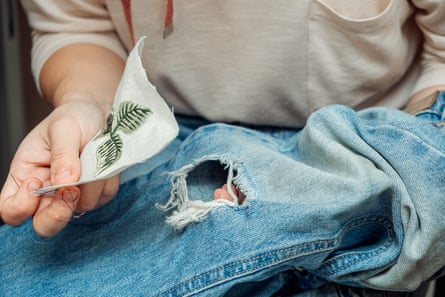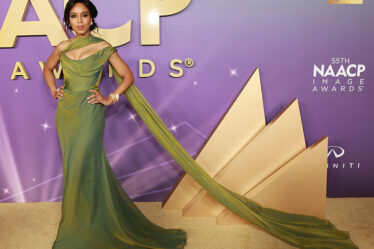
It’s hardly news that greenwashing is rife in the fashion industry. Recently, the Australian Competition and Consumer Commission and the European Union vowed to crack down on businesses using environmentally friendly marketing messages to mislead consumers.
The problem is the misapplication of vague, technical-sounding terms to products in an industry with little regulatory oversight. In the first instalment of our greenwashing glossary, we ask experts to decode some of the most common terms you’ll find in fashion. If there are other greenwashing terms you are curious about, please let us know in the comments below.
Carbon neutral
To be “carbon neutral” (or net zero) a company must take as as much carbon out of the atmosphere as it emits. Dana Thomas, European sustainability editor for British Vogue, and host of The Green Dream podcast, draws a distinction between companies that do this outside their supply chains – by offsetting through carbon credits or cleaning up polluted rivers – and those that build better systems to actually reduce the emissions within their supply chains.
“Companies hide behind carbon neutral [by] making their numbers on paper and in annual reports look better through offsetting,” she says. “Offsetting doesn’t mean you are neutral or negative. You must physically reduce your impacts. Not carry on polluting, then clean up something else, somewhere else.”
Circular
In fashion, “circularity” should refer to items made from reused materials, that can themselves be reused, repaired and recycled again and again – in a circle. But there are a few ways the term is misused. Most commonly, “circular” is used to describe products that have components that are recycled or downcycled (converted from one material into another that is usually less useful or structurally strong). This alone is not accurate, says Harriet Vocking, CEO of Eco-Age. To be truly circular, there has to be a viable end of life solution in place – such as take back programs to ensure the product will be recycled again.
“Another extremely important element of circularity is a long, useful life that enables repair and rewear through durable products, designed to last and free from trends,” she says. So, if a product is made using recycled materials that compromise the quality, it is not circular.
Tara St James, senior director of sustainability at Moose Knuckles, suggests thinking of circularity as a business model or a system, rather than a product. “There needs to be mechanisms in place for the products to be returned to those systems in order to be reused or recycled. Otherwise, they eventually end up in landfill … That’s not circular.”
Organic
Historically the term “organic” has been misapplied to identify natural fibres such as cotton, linen or hemp, says St James.
According to Thomas, when the term is used correctly, “organic” means no pesticides, herbicides, defoliants, GMOs, synthetic dyes or petroleum-based materials are present in an item .“So that GMO ‘sustainable cotton’ you’re sourcing from the Better Cotton Initiative, meaning most cotton today? Forget about it,” she says.
This is one area where certifications such as Global Organic Textile Standard can make the distinctions clearer. But since there are issues with certifications, to really be able to call a product organic, the brand needs to know where the cotton, hemp or flax (linen) was farmed.
Regenerative
Vocking describes “regenerative” fashion as fashion that gives back more than it takes from the planet. “If we were to sustain current practices, we would still be in a mess globally,” she says. “That is why we need regeneration.”
When applied to fashion, the term usually denotes a specific type of agriculture. “It means you are reversing climate change by rebuilding organic matter in the soil, restoring biodiversity, reducing carbon and improving the water cycle,” says Thomas. “You must tick all of those boxes to be regenerative.”
after newsletter promotion
There is a global standard for regenerative organic certification, established in 2017, but there are only 129 farms worldwide that have achieved this to date.
Sustainable
“‘Sustainable’ may be the most misused term of all,” says Thomas. She says the Oxford Dictionary defines environmental sustainability as “the degree to which a process or enterprise is able to be maintained or continued while avoiding the long-term depletion of natural resources.”
To actually run a business this way “you’ve got to think holistically,” she says. “Green practices must be incorporated in everything you do. Installing LEDs and solar panels is a start, but it does not make your company sustainable.”
To put it another way, the product designer Beth Esponnette argued that the overwhelming majority of sustainable fashion initiatives could more accurately be described as “less bad”.
Zero waste

St James says often “zero waste” is “used to describe a brand philosophy or business model” when that’s not really how it should be used. On its face, it seems simple enough – for example, nothing gets thrown away – but there are a few different practices it can refer to.
The most common “zero waste” practice is developing products using zero waste patterns, so fabric is cut in the most efficient way to minimise offcuts and leftovers. Other zero waste practices include reclaiming waste materials for recycling or upcycling.
Is there a fashion sustainability term you’d like us to demystify? Let us know in the comments.



